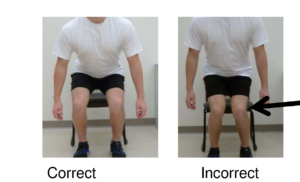Physical Therapy Telehealth: It works well for some, not for others

The COVID 19 pandemic crisis has many challenges for the standard everyday health care and medicine. The pandemic resulted in a sudden increase of telehealth services. There are reports there has been an 18% increase in the number of healthcare providers providing telehealth services in response because of the pandemic. Healthcare providers and patients are on a steep learning curve providing and utilizing healthcare and medicine via telehealth.
Some physical therapists are better prepared to handle this steep learning curve compared to others. Many Physical Therapists are learning for the first time how to provide Physical Therapy Online.
Physical Therapist has many tools in their toolbox of potential interventions. Some interventions in the Physical Therapist toolbox require hands-on.

Some interventions do not require hands-on. Physical Therapists have a bias towards selecting which intervention to provide. Obviously, Physical Therapists whose preferred choice of intervention is to use hands-on therapies, manual therapies (manipulation, manual adjustments, massage, myofascial release, dry needling, physical modalities) are challenged to figure out how to provide these types of intervention via telehealth platform. Some manual techniques can be taught to the patient – self-mobilization of joints.
Physical Therapists whose bias towards interventions is to teach alternate movements, correcting deviant movement patterns are better suited to provide interventions via telehealth platform.
Movement pattern training is an intervention provided by a Physical Therapist which identifies:
- Deviant movements and the direction of movements, that elicit symptoms
- Normal activities of daily living in which the symptomatic movements occur
- Alternate movement patterns during normal activities of daily living which decrease or eliminate the symptoms.
The key element of movement pattern training is task-specific instruction to alter deviant movement patterns during everyday activities. Instruction can occur via the telehealth platform.
A collapse of the knee, commonly referred to as “knee-knocking” when getting in or out of a chair is an example of the deviant movement of the knee joint in the direction of the mid-line of the body.

This movement pattern has been associated with an increased risk of developing patella-femoral arthralgia, hip tendinopathy, ACL tears, and other injuries.
Coaching and instruction to avoid the incorrect movement pattern to an alternative movement pattern can decrease or eliminate symptoms.
Additional examples of movement pattern training are:
- Initiate bending forward to pick something off ground by initiating movement from hip joint first and not from lumbar spine joints to avoid back pain
- Turn forearm palm towards the ceiling when gripping and lifting heavy objects to avoid lateral elbow pain instead of gripping and lifting heavy objects with the palm towards the floor
- Passively support arms and shoulder girdles with armrests on chairs or on a table to decrease or avoid headaches, neck pain, and shoulder problems.
- Keep the trunk in touch with the backrest of the chair to support the spine to decrease neck, shoulder, low back pain.
- Habitual sitting with legs crossed, that elicits buttock and knee pain
Research at Washington University St Louis Program in Physical Therapy on patients with hip pain compared using standard flexibility and strengthening exercises to movement pattern training. Movement pattern training is teaching a patient to alter movement patterns during functional activities. Movement pattern training appears to be superior for attaining and maintaining changes in functional limitations, pain, and movement characteristics in people with chronic hip pain.
Movement pattern training can be a powerful intervention in a standard face to face Physical Therapy services or thru Physical Therapy On-Line
The information on this website is not intended or implied to be a substitute for professional medical advice, diagnosis, or treatment. You are encouraged to perform additional research regarding any information contained on available through this website with other sources and consult with your physician.
Damien Howell Physical Therapy – 804-647-9499 – Fax: 866-879-8591 At-Home, At Office, At Fitness Facility – I come to you, I do home visits Damien@damienhowellpt.com
